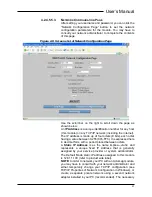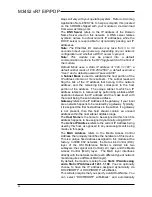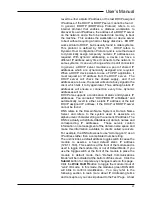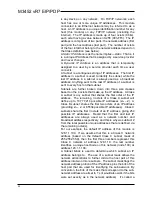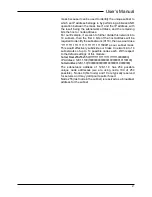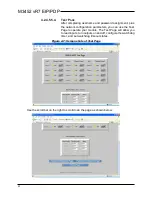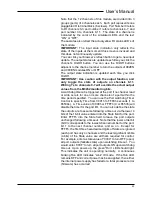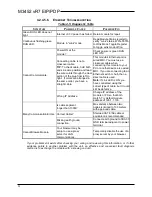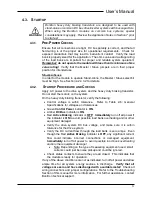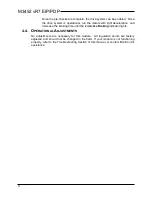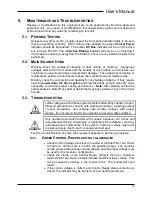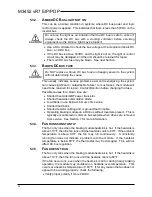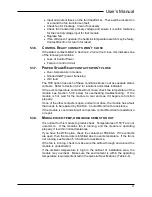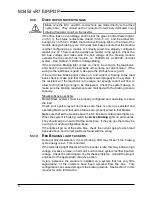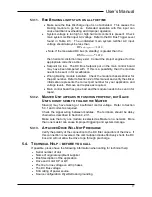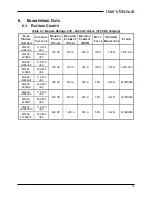
M3452 vR7 EIP/PDP
44
steps will vary with your operating system. Refer to Acromag
Application Note 8500-734 to help accomplish this (located
on the CDROM shipped with your module or via download
from www.acromag.com.
The
DNS Server
refers to the IP address of the Domain
Name Server used on this network. A DNS server relates
symbolic names to actual numeric IP addresses, while the
DHCP server is responsible for dynamically passing out IP
addresses.
Note: The EtherNet I/O modules may take from 3 to 30
seconds to boot upon power-up, depending on your network
configuration and whether a DHCP server is present.
Note: This module can be placed into a default
communication mode via the DFT toggle switch at the front of
the module.
Default Mode uses a static IP address of “128.1.1.100”, a
default subnet mask of “255.255.255.0”, a default username
“User”, and a default password “password00”
A
Subnet Mask
is used to subdivide the host portion of the
IP address into two or more subnets. The subnet mask will
flag the bits of the IP address that belong to the network
address, and the remaining bits correspond to the host
portion of the address. The unique subnet to which an IP
address refers to is recovered by performing a bitwise AND
operation between the IP address and the mask itself, with
the result being the sub-network address.
Gateway
refers to the IP Address of the gateway, if your local
area network happens to be isolated by a gateway. Typically,
it is assigned the first host address in the subnet. If a gateway
is not present, then this field should contain an unused
address within the host subnet address range.
The
Host Name
is the name to be assigned to this host if its
address happens to be assigned dynamically using DHCP.
The
Active IP Address
refers to the current IP Address being
used by this host, as opposed to any new assignments being
made via this page.
The
MAC Address
refers to the Media Access Control
Address that uniquely identifies the hardware of this device.
This is a unique fixed address assigned to this module at the
factory. In IEEE 802 networks, the Data Link Control (DLC)
layer of the OSI Reference Model is divided into two
sublayers: the Logical Link Control (LLC) layer, and the Media
Access Control (MAC) layer. The MAC layer interfaces
directly with the network media (each different type of network
media requires a different MAC layer).
By default, the module is setup to use
Static IP Addressing
and a Static IP Address of 128.1.1.100
. You can optionally
choose to have the IP address assigned dynamically via
DHCP/BOOTP or DHCP/BOOTP w/Fallbacks.
This will also require that you specify a valid Host Name. You
can select
“DHCP/BOOTP w/Fallback” and automatically
Summary of Contents for M3452
Page 14: ...M3452 vR7 EIP PDP 14 This page intentionally left blank ...
Page 19: ...User s Manual 19 Figure 3 2 Customer Connections in K9 Chassis CUSTOMER I 0 CONNECTION ...
Page 21: ...User s Manual 21 Figure 3 2 Customer Connections in M14 Chassis CUSTOMER I O CONNECTION ...
Page 24: ...M3452 vR7 EIP PDP 24 Figure 3 6 I O Hookup with R7 EIP PDP Communication ...
Page 26: ...M3452 vR7 EIP PDP 26 Figure 3 8 24VDC Power Connection ...
Page 58: ...M3452 vR7 EIP PDP 58 This page intentionally left blank ...
Page 66: ...M3452 vR7 EIP PDP 66 Figure 6 3 M3452 K9 Chassis Dimensional Outline Drawing ...
Page 68: ...M3452 vR7 EIP PDP 68 Figure 6 5 M3452 M14 Chassis Dimensional Outline Drawing ...
Page 75: ...User s Manual 75 NOTES ...
Page 76: ...M3452 vR7 EIP PDP 76 This page intentionally left blank ...
Page 77: ......
Page 78: ......
Page 79: ......














